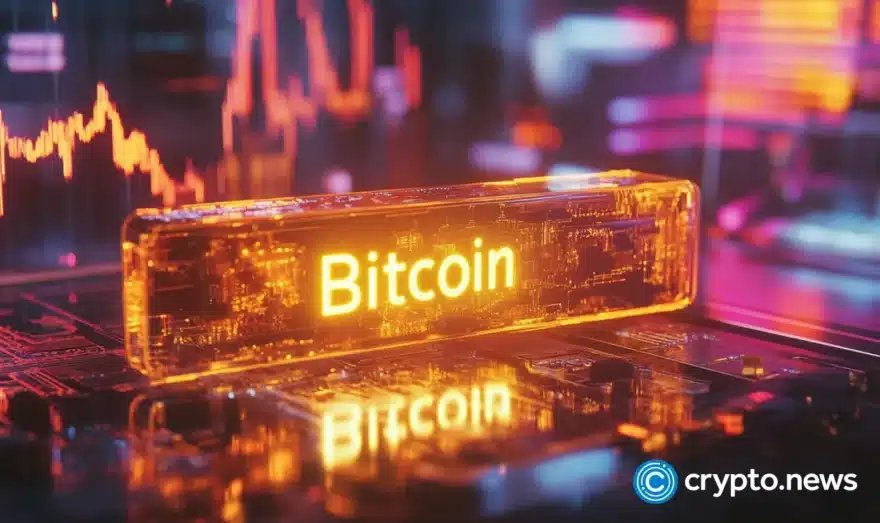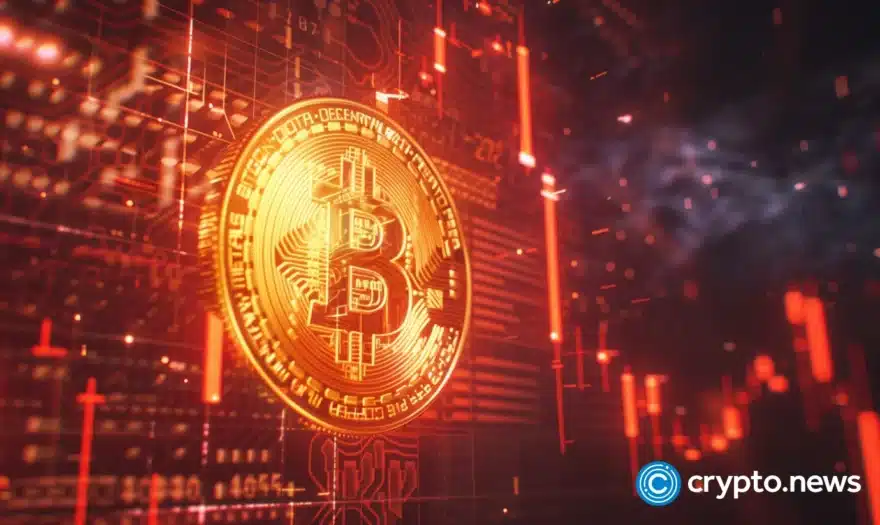Will Bitcoin’s success bring its doom?

As the fourth Bitcoin (BTC) halving gets closer, some experts believe the event could lead to centralization risk, threatening the blockchain network.
Once every four years, the block reward for Bitcoin miners is cut in half to help the asset maintain its scarcity. The event is called halving. Historically, miners have stayed fully operational and even grown in number over the last three compensation cuts thanks to the rising BTC price.
However, many wonder if the BTC price is high enough for miners to remain operational or if it would face centralization and even existential risks after the fourth halving event.
Speaking with crypto.news, Ryo Coin co-founder Lani Dizon says market dynamics can change, and unforeseen events can have significant impacts.
“Trying to predict the exact impact of a halving on Bitcoin’s price is a challenge. Many factors can influence the market, including overall demand for Bitcoin, investor sentiment, market trends, global economic conditions, regulatory changes, and technological advancements within the blockchain ecosystem, and more.”
Lani Dizon, Ryo Coin co-founder
Dizon believes while some miners might find the reduced block reward “challenging,” especially if the price doesn’t increase immediately or sufficiently to offset the reduction in rewards, the “Bitcoin network is designed to adjust.” She added:
“However, from a logical perspective, when mining costs are lower than Bitcoin’s market value, more miners will stay in the network. When mining costs increase beyond the miner’s revenue, some miners will leave.”
Compensation concerns
One of the main concerns around the centralization of Bitcoin is the compensation of the miners helping the network stay operational.
As the block reward reduces by 50% in the upcoming halving — falling from 6.25 BTC to 3.125 BTC — Bitcoin’s high price volatility could make it harder for individual miners to be well compensated to operate their nodes in challenging conditions.
Historically, the BTC price reached new all-time highs a year or 18 months after each halving event. Here’s how the Bitcoin price reacted after each halving:
- First halving on Nov. 28, 2012: Bitcoin was trading at $12.35 and surged to $964 a year later.
- Second halving on July 9, 2016: Bitcoin’s price increased from $663 to $2,500 in around one year.
- Third halving on May 11, 2020: BTC was trading at around $8,500 and reached almost $69,000 in just 17 months.
According to Lucian Calin, the former data center technician at Argo Blockchain, some over-leveraged miners might not make it through the halving because of high overhead costs or massive debt, but it will all even out in the end. He added:
“It’s like a game of monopoly, the rich keep getting richer, in this case, other miners will buy out smaller miners and take over their activities. Mining will always exist on Bitcoin until the last Bitcoin is mined and even past that to make sure the transactions are confirmed.”
Halving rewards, rising centralization risks
Halving Bitcoin’s block reward could strain small-scale and individual miners because of the high costs involved in mining. Smaller miners might exit the market if they lack sufficient resources. This situation could favor larger mining companies, potentially leading to more centralized network control.
Bitcoin’s centralization could pose a much bigger threat to the global financial system than it seems, with BTC exchange-traded funds (ETFs) registering over $11.2 billion in total net flows.
Centralization could potentially expose the Bitcoin network to the 51% attack and could even lead to a single entity having full control over the blockchain.
This doesn’t seem impossible, given that the Foundry USA Pool controls 27% of the total Bitcoin hashrate. The largest BTC mining pool has an average hash power of 160.43 EH/s followed by AntPool’s 141.46 EH/s — accounting for 23.8% of the total network hash rate.

However, Lani Dizon says that Bitcoin’s decentralized nature is designed to prevent any single entity from controlling it. Its network relies on a proof-of-work (PoW) consensus mechanism, where miners compete to validate transactions and secure the network. Dizon added:
“Although there are centralization concerns in the mining ecosystem, where large mining pools or entities could potentially exert influence, Bitcoin’s decentralized design makes it resistant for any large entity to have complete control.”
Lucian Calin argues that with this current ETF from BlackRock and other big institutions, “we might see them try to take over Bitcoin and make it more centralized.” Calin added:
“But it will be very hard for them to do so without making the price explode up like they did in the past few weeks. All of that is because of the low supply of available Bitcoin on exchanges which will intensify with the Bitcoin halving coming up.”
Calin believes that big institutions cannot monopolize Bitcoin without making its price reach “millions of dollars” since there is a limited number of coins available on exchanges. Per data from Coinglass, roughly 1.78 million BTC tokens are available on all exchanges, which accounts for less than 10% of the maximum Bitcoin supply.
“Bitcoin absolutely cannot be centralized”
On March 18, Bitfinex crypto exchange released a report claiming that the forthcoming Bitcoin halving could lead to the centralization of the BTC mining power. Centralization could eventually lead to vulnerabilities and censorship which is “contrary to Bitcoin’s ethos.”
The U.S. alone has a 37.84% share of the total BTC hash rate with a total hash power of 226.61 EH/s, according to The Chain Bulletin.
While this poses concerns about Bitcoin’s centralization, the diversified global distribution of miners and their varying strengths to adapt essentially mitigate that risk, ensuring the network remains decentralized.
Bitcoin miner and the director of business development at Canaan, Christopher James Crowell, believes that Bitcoin mining is too much of a global “phenomenon to be controlled by a central entity.” Crowell told crypto.news:
“Countries all over the world have their own unique advantages. Whether it be low labor costs, cheap power, or great innovation, there are plenty of unique entities in mining Bitcoin to safely say that it absolutely cannot be centralized.”
Legal dilemma
If the impossible happens, experts have diverse ideas on how the governments would react to the situation since Bitcoin’s centralization could temper with the global financial situation.
Dizon says that governments would view any attempt to control Bitcoin by a single entity as a significant threat to financial stability and may take regulatory actions to mitigate the concentration of power. She stated:
“They would likely respond with increased regulatory scrutiny and potentially implement measures to decentralize control, safeguard financial stability, and protect against manipulation or monopoly power in the Bitcoin ecosystem.”
On the other hand, Calin says that the government can’t do anything due to the international nature of Bitcoin. He said:
“The companies will simply move their headquarters and operations elsewhere in the world where it is more favorable for them and offer it to many other people that way.”














